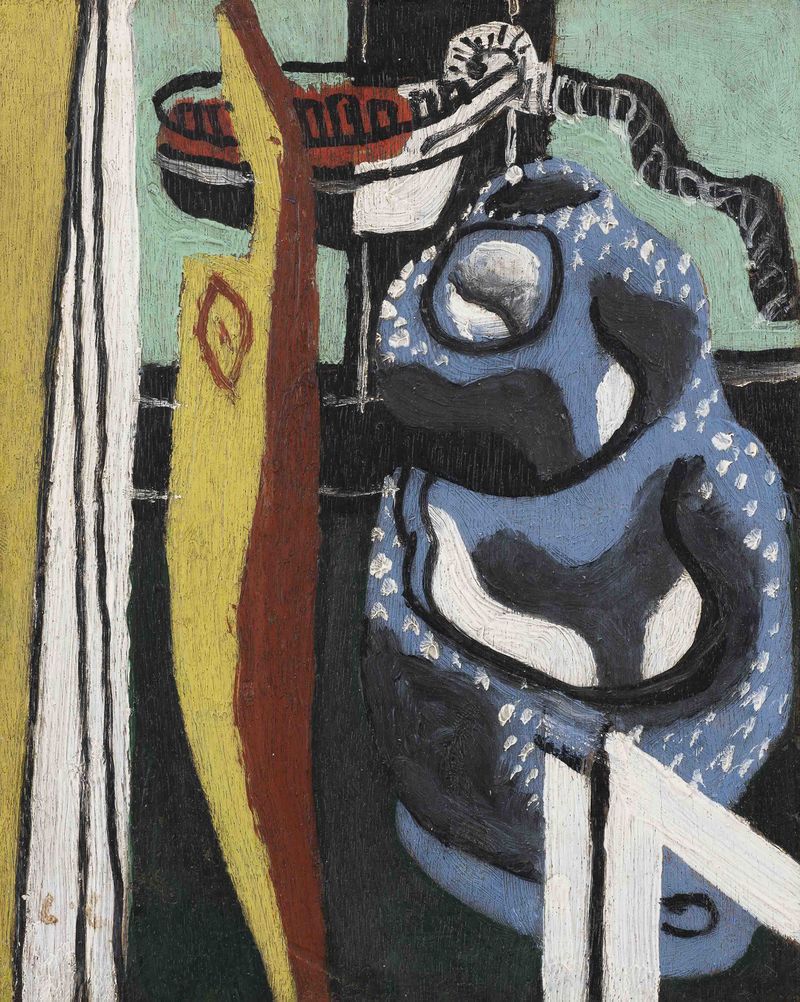Le Corbusier
(Swiss-French, 1887-1965)
Barque et coquillage
c.1938
oil on panel, in the artist’s frame
21.3 x 17.1 cm (8⅜ x 6¾ in.)
signed with the monogram (lower left); signed ‘Le Corbusier’ and dedicated ‘pour Urmila, Bonheur pour toute la vie! amitie 27 mai 1955’ (on the verso)
Private collection, India (gifted by the artist in 1955)
Private collection, France (acquired from the above)
Naïma & Jean-Pierre Jornod, Le Corbusier (Charles Edouard Jeanneret), Catalogue raisonné de l'œuvre peint, Milan, 2005, vol. I, no. 207, illustrated p. 637 (with incorrect measurements)
"Witnesses qualified as objects which evoke a poetic reaction are those which by their shape, size, substance and durability are worthy of a place in our homes... Broken shells reveal their amazing spiral structure to us....They are caressed by your hands, your eyes gaze upon them, they are evocative companions…; By means of them, friendly contact between nature and ourselves is woven." - Le Corbusier
Depicting a seashell, a boat and a tree trunk, Barque et coquillage is a wonderful example of Le Corbusier’s exploration of ‘objets à réaction poètique’ - the bringing together of eclectic forms to examine ideas of space and structure. The focus of the composition is the large seashell, a form which held a continuous fascination for the artist.
Le Corbusier began collecting seashells as well as other natural objects from the early 1920s, drawn to the idea of items shaped by both intent and chance. In the present work the spiralling seashell is rendered as an architectural structure as it stands upwards, its frontal cross-section showcasing its central axis and interior cavity. Patterned by energetic dots of white pigment, the fluid form of the shell is balanced in the composition through the interplay of shape in the vertical lines and stripes of the tree trunk along the left hand side and the thrust of orthogonals in the lower right hand corner.
Painted c.1938, this rhythmic and elegant oil was gifted by Le Corbusier to the daughter of a close friend on the occasion of her wedding in Delhi in 1955; the work remained in the family’s collection for over two generations.
The concentric circles drawn by Le Corbusier in the lower left corner on the verso indicates that he considered it to be a significant painting and the immediate tray frame was an intentional fabrication for the artist.
Price:
£115,000 (+5% import VAT)
More artworks by Le Corbusier ▶
You may also like:
Enquire Now
Fill in the form below and we will respond as soon as possible.
Make an offer
Fill in the form below and we will respond as soon as possible.



